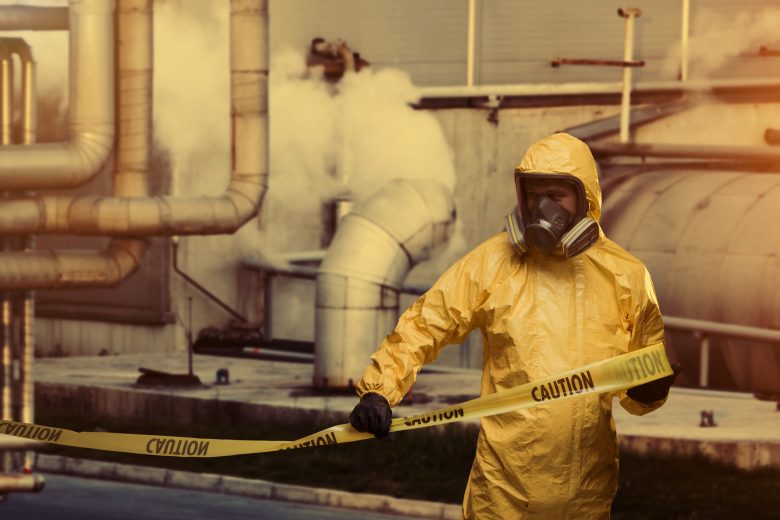Hazardous waste operations and emergency response (HAZWOPER) is a health and safety standard to ensure the safety of workers performing hazardous waste cleanup or response actions. It outlines the safety requirements and training criteria that are necessary to protect employees when dealing with hazardous waste in certain capacities.
The specifics of each job determines the policies and procedures that must be followed under HAZWOPER and other related standards.
Who is covered by the HAZWOPER standard?
According to OSHA’s guidelines, HAZWOPER applies to five groups of employers and employees exposed (or even only potentially exposed) to hazardous substances involved in the following:
- clean-up operations required by a governmental body, conducted at uncontrolled hazardous waste sites, and involving hazardous substances;
- corrective actions involving clean-up operations at sites covered by the Resource Conservation and Recovery Act of 1976 (RCRA);
- voluntary clean-up operations at sites recognized by a governmental body as uncontrolled hazardous waste sites;
- operations involving hazardous wastes that are conducted at treatment, storage and disposal (TSD) facilities regulated by Title 40 Code of Federal Regulations Parts 264 and 265 or by agencies under agreement with U.S. Environmental Protection Agency to implement RCRA regulations;
- emergency response operations for releases of, or substantial threats of releases of, hazardous substances regardless of the location of the hazard.
When considering how HAZWOPER relates to your workplace, you need to remember that sometimes this standard is not necessary. Some companies employing workers in jobs with hazardous materials contact potential will automatically assign HAZWOPER training to these employees.
However, workers whose duties are on controlled hazardous waste sites, in laboratories, chemical manufacturing plants and many others, do not necessarily need HAZWOPER training. Often, these workers require hazard communication standard (HAZCOM) training. But unfortunately, there are situations when HAZCOM is not applied, or is applied poorly, and HAZWOPER is brought in “just in case”.
If employees work in an uncontrolled hazardous waste site role, or supervise someone who does, then HAZWOPER applies. Otherwise, study your situation well and confirm if one or both standards apply to your workplace.
What constitutes a hazard?
Under HAZWOPER a hazard “applies to response activities where there is an uncontrolled release of a hazardous substance, or where an uncontrolled release is likely.” Here are examples of situations that constitute a hazardous waste emergency and are covered by the standard:
- high concentrations of toxic substances
- situations with an oxygen-deficient atmosphere
- threat of injury or death
- situations that pose a fire or explosion hazard
- evacuation is required
There is a difference between incidental spill of hazardous substances and an emergency spill. If the spill doesn’t pose a significant health hazard or a safety hazard to the employees cleaning it up and it doesn’t have a potential to turn into an emergency, then it’s an incidental release. Such situations can be safely dealt with by trained employees who are familiar with the substances they handle.
The difference between an incidental spill and an emergency spill is also facility-specific. Pre-established procedures, employee training, their response and the PPE available all contribute to this difference. In general, however, it could be stated that incidental releases are limited in quantity, toxicity and exposure potential. Response to incidental releases is not governed by the HAZWOPER standard.
HAZWOPER training
HAZWOPER training is not designed to teach specific technical response activities. Instead, it concentrates on policies and procedures that protect workers while they perform these activities. For example, it’s not about how to plug a chemical leak but how to remain safe while doing it.
OSHA recognizes several levels of HAZWOPER training, each with specific topics and minimum training time. The levels of training are based on the work performed by the employee and the degree of hazard. But the initial training consists of a 24-hour or a 40-hour course. In addition, an eight-hour refresher course is required every year.
Before deciding on a training course, it’s important to know that the difference between training levels depends on the situation. For example:
- managers and supervisors need an additional eight hours of training on top of the same level of training as those they supervise;
- workers limited to a specific task need 24 hours of training and one day of supervised hands-on training;
- general site workers are required to complete 40 hours of instruction and three days of supervised hands-on training.
The training needs to be relevant to the worker’s situation because sometimes training levels overlap and it’s important to confirm which level of training is appropriate.
According to OSHA, computer-based training is not enough to cover the requirements of the initial HAZWOPER course. Watching a video of people putting on PPE or using a respirator is never equal to learning these things in person. This is why OSHA doesn’t approve of this training method. But e-learning may meet some refresher training requirements if it includes an opportunity to ask a qualified trainer questions. It should also include an assessment of hands-on work tasks performance.
It’s worth noting that in-class training isn’t a guarantee of good learning outcomes. Mandatory safety training classes like HAZWOPER can be boring to the point of making them ineffective. As Tim Page-Bottorff says in his article All Hands on Deck: “[HAZWOPER] has to be one of the most boring classes I have ever attended, or taught for that matter. And it is usually the instructor that can make or break the class.” Whenever possible, look for classes that prioritize learner engagement. (And if you teach a HAZWOPER class, consider injecting some humor into your lesson plan.)
It may also make sense to pair HAZWOPER training with human factors training. Emergency situations can sometimes cause people to panic or rush. Human factors safety training will teach employees to recognize and deal with states of mind that can affect their actions and jeopardize their safety.

